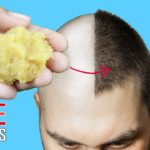Shedding a bit more than normal? Is your part starting to look a little wider? Praying for miracles from your volumizing shampoo? You may be experiencing ANDROGENETIC ALOPECIA. It’s hereditary hair thinning and it’s the most common form of hair loss for both men and women.
It can really sneak up on you! It’s usually noticed in your 30’s or 40’s though it can begin ANYTIME after puberty — that’s one heck of quinceanera present. Thanks mom and dad! Genetics cue the hair follicles to get narrower, leading to thinner and thinner hair that eventually disappears. For, women it generally happens evenly across the scalp, and can resemble a xmas tree pattern.
Men get a receding front hairline and thinning at the crown. While some can take advantage of surgery most treatments can only delay or minimize the loss.
Experiencing a lot of shedding after a major life event? That could be TELOGEN EFFLUVIUM, a disturbance in the natural hair cycle. Normally, the majority of the hair on our head is in a growth phase, with only a small amount of hair is in the rest phase.
But a major body stress like severe illness, thyroid disorder, certain medications , and childbirth– may kick a ton of hairs into the rest phase. The result is a pronounced shed, 2-3 months after the stressful event.
Yep, you’re reward for for creating a new human – may be losing your hair. TOTALLY UNFAIR. The good news?
If you figure out what’s triggering the hair loss and put an end to it early, your hair should grow back.You can even enlist a dermatologist to help you pinpoint the problem. On a related note, those that lose their hair from radiation therapy, are experiencing ANAGEN EFFLUVIUM, instead of telogen effluvium. That’s hair that’s lost in the growth phase. If you’re experiencing sudden, localized, patchy hair loss.

It could be ALOPECIA AREATA, an autoimmune disease where inflammatory cells target the hair follicle and prevent hair growth. The silver lining here is that the follicles aren’t permanently damaged – and that means there’s the potential for hair to return, even after many years of hair loss. Hit up your doctor if your looking for a treatment plan. Lastly, if you’re a frequenter of the man bun, and it gets pulled too tight, you could experience traction alopecia. Hairstyles like tight ponytails, braids, extensions, cornrows and dreads can create hair loss from excess tension or weight.
This creates short, broken hairs and sometimes even bald spots. Catch the problem early enough and hair grows back. Ignore it, and get used to the new buzz cut. The important thing is, don’t procrastinate. Getting treatment early can mean the difference between keeping and losing your hair.
And don’t let anyone minimize your concerns. If you’re doctor isn’t taking you seriously dont be afraid to switch or see a dermatologist that specializes in hair loss There are lots of treatment options available once the cause of your hair loss is identified. I’ll even be looking more closely at some of them in future videos. If you have a personal experience with hair loss you want to share, or if you know something about the topic, I’d love to hear from you in the comments section below. Thanks for watching!
******************************************** About a year ago I was losing lots of hair and I went into my general practitioner and he did a “pull test” — and said your fine.
It’s wasn’t till I did the research that I found out hair loss like androgenetic alopecia won’t be positive in a pull test. The doctor should have listened to my concerns and told me what to look for. In most cases hair loss can be minimized or corrected if it’s caught early..





